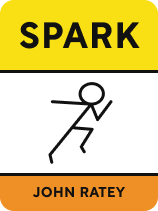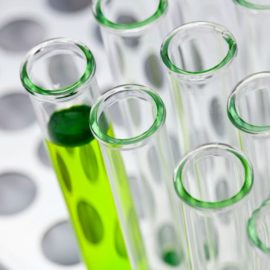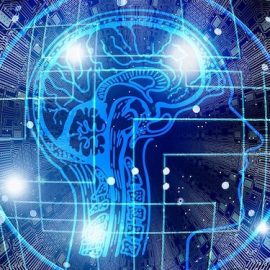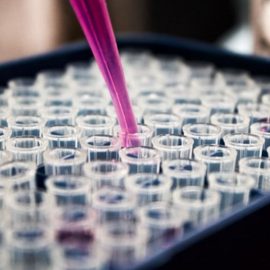

This article is an excerpt from the Shortform book guide to "Spark" by John Ratey. Shortform has the world's best summaries and analyses of books you should be reading.
Like this article? Sign up for a free trial here .
What are the benefits of physical exercise for the brain? Can exercise improve brain function?
It’s no secret that regular exercise makes you fit and sexy. Another (less-talked-about) benefit of exercise is that it can make you smarter by boosting your cognitive function. Specifically, exercise supercharges the brain in two ways: 1) it strengthens neurons, and 2) it stimulates the growth of new neurons.
Here’s a quick look at exercise and the brain.
1. Exercise Strengthens Neurons
The brain uses a network of specialized cells called neurons to communicate across its various regions. Communication happens when electrical signals move along this network from one neuron to another, crossing the gaps (synapses) between the neurons by jumping from the signaling ends (axons) of one neuron to the receptors (dendrites) of another. Given this system, Ratey observes that increasing the strength of the signal and the number of receivers on a neuron improves the neural network.
In recent decades, science has made great strides in learning about exercise and the brain. Specifically, researchers identified how exercise improves the neural network: It stimulates the production of a protein called brain-derived neurotrophic factor (BDNF), which increases the growth of dendrites on neurons and enhances the electrical voltage of the signal generated in the neuron. This results in more neural connections and better neural communication. In technical terms, this is called “synaptic plasticity.”
| Other Ways to Increase BDNF Exercise has been proven to increase BDNF levels but it’s not the only influence on the protein. Experts note that several other factors also affect the amount of BDNF circulating in the body. A few of these factors stand out and should be considered alongside Ratey’s emphasis on exercise. Each of the following increases BDNF in the body: – Sun exposure (Accordingly, there are seasonal variations in BDNF levels.) – Calorie restriction and intermittent fasting – Certain diets, such as the Mediterranean diet and the keto diet – Dietary supplements high in omega-3 fatty acids (for example, fish oil) |
2. Exercise Stimulates the Growth of New Neurons
Before the late 1990s, scientists didn’t believe the adult brain could produce new neurons—they thought neuron production (neurogenesis) was purely a phenomenon of a child’s growing brain. Discoveries since that time, however, have overturned this belief, confirming that new neurons are born in adulthood.
Most neurons created during adulthood, however, only survive for a short time. Their survival is determined by whether or not they fire (generate an electrical signal): If they don’t, they die.
Ratey explains that exercise has been shown to stimulate neurogenesis in the lab and suggests that the effects of BDNF on the neural network (increasing the number of dendrites and enhancing the electrical signal) enable those baby neurons to fire and survive. More BDNF, therefore, results in more functioning, stable neurons.
Furthermore, exercise also releases two other growth factors—vascular endothelial growth factor (VEGF) and fibroblast growth factor (FGF-2)—that stimulate the process of cell division, which also powers neurogenesis.
| Adult Human Neurogenesis Remains a Science Frontier At the time Spark was published, the science on adult human neurogenesis was new—it was some of the “revolutionary new science” Ratey refers to in the subtitle. Ratey based his theories on this new science, but not all experts believe that adult human neurogenesis actually happens—it remains a debated topic in neuroscience. In the early 20th century, neuroscientists concluded that neurons were only born in the brains of children—in a mature body, neurons could only decay and die, not be created. This view became the dominant belief in the understanding of the human brain. In the middle of the century, evidence started to emerge showing adult neurogenesis in animals. Then, in 1998, an influential paper concluded that neurons are also generated in the human adult hippocampus. The researchers’ findings were based on post-mortem samples of adult cancer patients. However, because it’s difficult to examine the living human brain for signs of neurogenesis, scientists have had difficulty getting definitive results. A recent review of the state of the science concluded that there’s insufficient evidence to support adult neurogenesis in humans. The reason for this hinges on the lack of safe, non-invasive technologies to support the research. So, although promising evidence of adult neurogenesis is continually emerging (studies have found it continuing into “the 10th decade” of life), the field remains a frontier in science. Therefore it’s possible that the positive effects of exercise that Ratey observes aren’t explained by neurogenesis, but instead by another biological mechanism that Ratey doesn’t explore. |

———End of Preview———
Like what you just read? Read the rest of the world's best book summary and analysis of John Ratey's "Spark" at Shortform .
Here's what you'll find in our full Spark summary :
- How exercising can help with addiction, anxiety, and depression
- A look at how exercise optimizes brain function and supports mental health
- What exercises are the most beneficial, and how to stick to a routine






